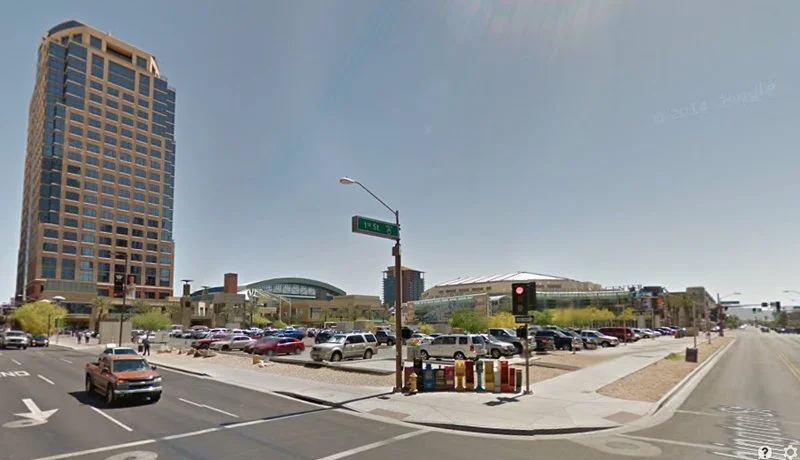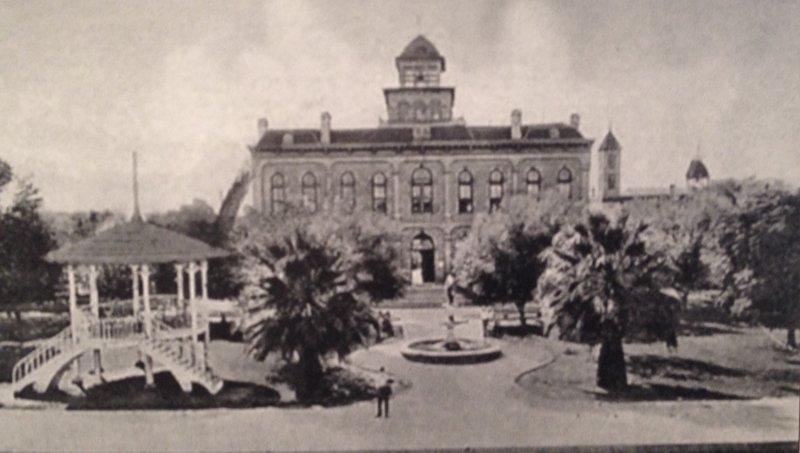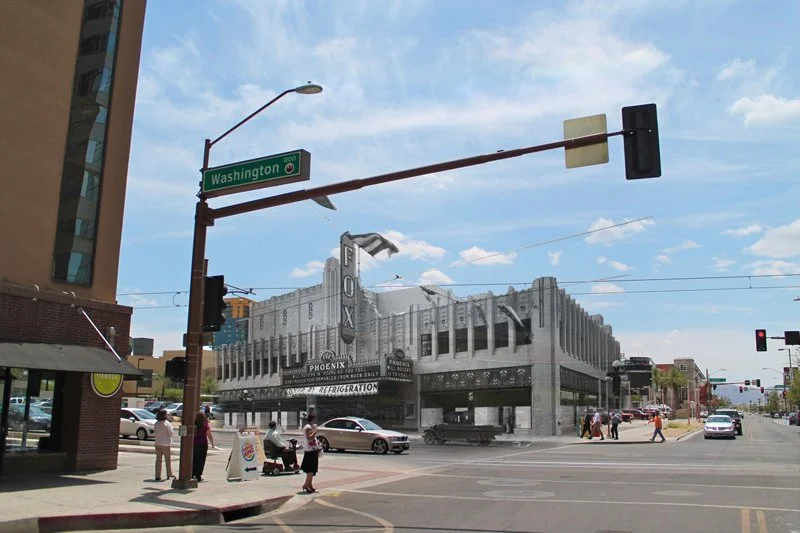Paradise and Parking Lots
Fairly often I have meetings in downtown Phoenix, and when I do, most of the time I park in a surface lot on the corner of First and Washington streets.
It’s in a convenient location and it’s really affordable—usually $5, though bumped up to $10 when there’s a sporting event. At a certain cognitive level I know that surface lots are bad for cities. I know this intuitively and experientially, and I’ve dabbled enough in New Urbanist thought to have had those intuitions and experiences reinforced. But I had never really stopped to think about what was there—on the block of land framed by First and Second, Washington and Jefferson—before it was a nondescript slab of asphalt overseen by a couple of fee collectors in golf carts.
I stumbled upon the answer while spending some time with the book Vanishing Phoenix, a collection of old black and white photos with commentary about the city’s former architectural glory by Robert A. Melikian. (Incidentally, the book inspired a now-defunct but still interesting blog by the same name.)
As it happens, what is now the place where I park my car was once the site of Phoenix City Hall. The book includes two photos of the original building, including this one, courtesy of the private Heberlee Collection (pardon the blurriness; it’s an iPhone photo of a printed photo).
From Melikian we learn:
Construction started in November 1887 by John J. Gardiner for $15,580 and was completed in 1888. When the capitol of Arizona moved from Prescott to Phoenix in 1889, this building was used as the state house, the offices of the governor and secretary, and the legislature’s meeting place. They held their biennial sessions on city hall’s upper floor…
The description of the Phoenix City Hall in the 1950 Phoenix City Directory was that “the block of ground upon which the old city hall stood was known as the Plaza and was originally set aside by the founders of Phoenix (in perpetuity) as a place for rest and peaceful contemplation. Their laudable desire, however, was long since nullified and the ground is now used for commercial purposes.” A bell tower was added in 1905. The building was torn down around 1928.
This anecdote illustrates something profound about our cities and how they are shaped over time. What I take for granted as affordable and convenient has come at the expense of something far more valuable and far more difficult to replicate—an iconic, beautiful government building in the heart of the city, in the midst of an oasis cultivated with care “as a place for rest and peaceful contemplation.”
UPDATE: Since writing this post, I finished reading Vanishing Phoenix. And in the later pages of it, I learned about Fox Theatre, an ornate art deco gathering place that stood on this same block after the original City Hall building but before it became a parking lot. It opened on July 30, 1931 and was a vibrant place into the 50s, around the time people started leaving for the ‘burbs. It was razed in 1975. Over at the TRU PHX blog, an artist named Hector Primero has used Photoshop to superimpose the Fox Theatre over a photo of the intersection as it currently appears today. Incidentally, the angle here is more or less the same as the header photo above, facing southeast.
Anyway, Joni Mitchell, over to you.


